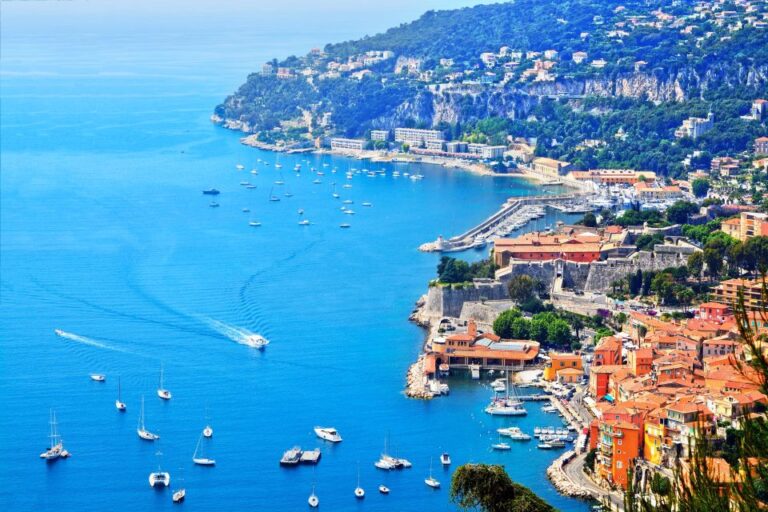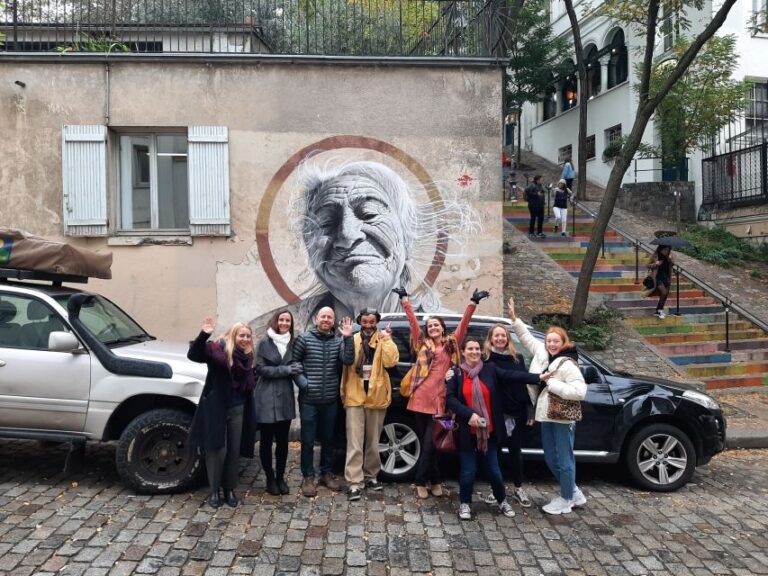Arles is a fascinating city that will delight both history buffs and art lovers alike. The main attractions are the Roman monuments, which are some of the best-preserved outside of Rome. Here’s a list of the must-see sights and activities in Arles:
Roman Monuments
Thermes Constantin
The Thermes Constantin are the Roman Baths located near the river. These baths were built during the reign of Emperor Constantine in the 4th century AD. The remains of the baths give visitors a glimpse into the daily life of the ancient Romans.
Théâtre Antique d’Arles
The Théâtre Antique d’Arles is a Roman theatre that dates back to 20 BC. It was the site of free public entertainment, including tragedies, comedies, and pantomimes. During the Middle Ages, houses and churches were built inside the theatre, and the Tower of Roland remains from this period. Over time, stone from the theatre was quarried and used in other construction projects throughout Arles. Despite this, several antiquities were removed and preserved, such as the colossal statue of Augustus in the Musée de l’Arles et de la Provence Antiques and the “Venus of Arles” now in the Louvre. Today, the theatre is once again used for concerts and operas.
Arènes d’Arles
The Arènes d’Arles, or Roman Arena, is an amphitheatre dating from around 90 AD. In ancient times, it was the bloody battleground for gladiators. During the Middle Ages, it was transformed into a fortified town. Today, the arena hosts bullfights during the Féria d’Arles, including the Féria du Riz or Rice Festival.
Le Cirque Romain d’Arles
The Le Cirque Romain d’Arles, or Roman Circus, was a hippodrome built around 148 AD for chariot races. It was an impressive structure, measuring nearly 1,500 feet in length and 340 feet wide, with a seating capacity of 20,000 spectators. The Circus likely drew crowds not only from Arles but also from other settlements along the Rhône. While not much remains of the actual site, visitors can see some of the archaeological finds on display at the adjacent Museum of Ancient Arles. The obelisk that once stood in the Circus now stands in Place de la Republique.
Historic Squares and Buildings
Place du Forum and Temple Columns
The Place du Forum is the site of the ancient Roman Forum, which was the center of colony life. It was constructed between 30-20 BC. The temple columns are embedded in the wall of the historic Hotel Nord-Pinus, a noteworthy building due to the location of the columns.
Cryptoporticus
The Cryptoporticus is a series of underground walkways that were built to support the foundation of the Roman Forum. Today, the structures above this underground arcade include the Chapel of the Jesuit College and the Hotel de Ville (City Hall).
Place de la République and l’Obélisque d’Arles
The Place de la République is the heart of the city and essentially the ‘town square’. It is framed by the City Hall, the Church of St Trophime, the Cloisters of St Trophime, and St Anne Chapel. At its center stands the Obelisk of Arles, which dates from the 4th century BC and originally stood in the Roman Circus. St Trophime, a 12th-century church and former cathedral, represents Provençal Romanesque architecture and is one of the monuments listed as a World Heritage Site.
Palais des Podestats
The Palais des Podestats is a 13th-century fortified palace that served as the seat of power during the Middle Ages. It housed the offices of the Consuls, Chief Magistrates (Podestàs), and Counts at various times. Today, it serves as offices for municipal services. In the courtyard, which is accessible to the public when the gates are open, visitors can see ancient graffiti carved into the stone, including symbols such as the cross of the mariners of Arles. On the opposite wall, there are doors of former prison cells, which were used as recently as World War II.
City Gates and Fountains
Porte de la Cavalerie
The Porte de la Cavalerie is a medieval city gate located just north of the city center. It was named for the Knights Templar, who were former inhabitants of the neighborhood. Originally constructed in the 13th century and rebuilt in the 16th century as part of the city ramparts, the gate towers once served as a prison. Today, the Porte de la Cavalerie leads from the old town to the train station.
Fontaine d’Amédée Pichot
The Fontaine d’Amédée Pichot is a late-19th century fountain featuring an enameled tile medallion (an allegory of Poetry) by painter Paul Balze. It was built for Pierre-Amédée Pichot, whose father was a friend of the artist. The fountain is located at the intersection of Rue Voltaire and Rue Amédée Pichot, just inside the old city wall near the Porte de la Cavalerie.
Van Gogh’s Arles
Van Gogh Walk
One of the top things to do in Arles is to take the Van Gogh Walk. This is an excellent way to experience the city through the eyes of the famous Dutch artist. Markers throughout the city allow visitors to see various sites, such as the ‘Terrace of a Cafe at Night on the Place du Forum’ or the ‘Garden of the Hospital in Arles’, as they are depicted in Vincent’s paintings and as they appear now. The Tourist Office provides a handy map of the various locations.
L’espace Van Gogh
L’espace Van Gogh is the former 16th-century Hôtel-Dieu-Saint-Esprit, the city’s main hospital, where Vincent van Gogh spent some time after cutting off his ear. During his stay here, he painted ‘Garden of the Hospital in Arles’ and ‘Ward in the Hospital in Arles’. The hospital was converted into a cultural center in the 20th century, and today the courtyard is open to visitors free of charge. L’espace Van Gogh is located at Place Félix Rey, a short walk from the Tourist Information Office.
Museums and Exhibitions
Musée de l’Arles et de la Provence Antiques
The Musée de l’Arles et de la Provence Antiques is a must-visit for history enthusiasts. The museum houses an extensive collection of ancient artifacts discovered in and around Arles, including the colossal statue of Augustus that once stood in the Roman theatre.
Fondation Vincent van Gogh Arles
Art lovers should not miss the Fondation Vincent van Gogh Arles, a modern art center dedicated to the works and legacy of Vincent van Gogh. The foundation hosts temporary exhibitions showcasing the works of contemporary artists inspired by Van Gogh’s art and life.
Festivals and Events
Arles is home to several exciting festivals and events throughout the year, including:
- Féria d’Arles: A series of bullfights and celebrations held in the Roman Arena.
- Les Rencontres d’Arles: An annual summer photography festival featuring exhibitions, workshops, and screenings.
- Festival Arlésien: A celebration of Provençal culture, traditions, and cuisine.
When planning your visit to Arles, be sure to check the local event calendar to see if any of these festivals coincide with your travel dates.
Arles is a city that offers a fascinating blend of ancient history, artistic heritage, and Provençal charm. Whether you’re exploring the Roman monuments, following in the footsteps of Vincent van Gogh, or simply soaking up the atmosphere of this enchanting city, Arles is sure to leave a lasting impression on every visitor.





